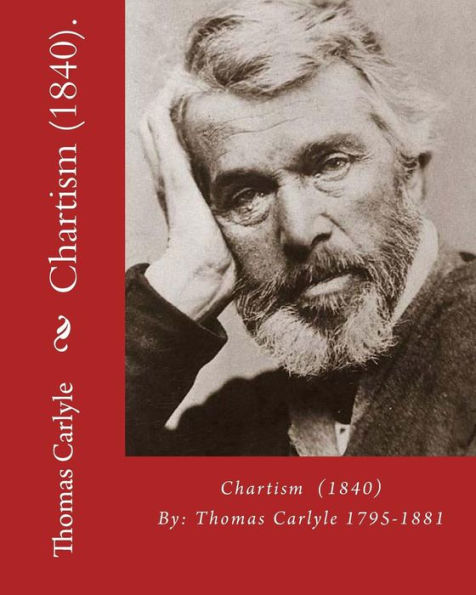Home
Chartism (1840). By: Thomas Carlyle 1795-1881: Thomas Carlyle (4 December 1795 - 5 February 1881) was a Scottish philosopher, satirical writer, essayist, historian and teacher.
Barnes and Noble
Loading Inventory...
Chartism (1840). By: Thomas Carlyle 1795-1881: Thomas Carlyle (4 December 1795 - 5 February 1881) was a Scottish philosopher, satirical writer, essayist, historian and teacher. in Bloomington, MN
Current price: $7.65


Chartism (1840). By: Thomas Carlyle 1795-1881: Thomas Carlyle (4 December 1795 - 5 February 1881) was a Scottish philosopher, satirical writer, essayist, historian and teacher. in Bloomington, MN
Current price: $7.65
Loading Inventory...
Size: OS
Thomas Carlyle (4 December 1795 - 5 February 1881) was a Scottish philosopher, satirical writer, essayist, historian and teacher.Considered one of the most important social commentators of his time, he presented many lectures during his lifetime with certain acclaim in the Victorian era. One of those conferences resulted in his famous work On Heroes, Hero-Worship, and The Heroic in History where he explains that the key role in history lies in the actions of the "Great Man", claiming that "History is nothing but the biography of the Great Man". A respected historian, his 1837 book The French Revolution: A History was the inspiration for Dickens' 1859 novel A Tale of Two Cities, and remains popular today. Carlyle's 1836 Sartor Resartus is a notable philosophical novel. A great polemicist, Carlyle coined the term "the dismal science" for economics.He also wrote articles for the Edinburgh Encyclopaedia, and his Occasional Discourse on the Negro Question (1849) remains controversial.Once a Christian, Carlyle lost his faith while attending the University of Edinburgh, later adopting a form of Deism.His philosophy, combined with his appreciation of the German culture, the Norse mythology and his anti-democratic views, is considered a form of proto-fascism. In mathematics, he is known for the Carlyle circle, a method used in quadratic equations and for developing ruler-and-compass constructions of regular polygons.
Thomas Carlyle (4 December 1795 - 5 February 1881) was a Scottish philosopher, satirical writer, essayist, historian and teacher.Considered one of the most important social commentators of his time, he presented many lectures during his lifetime with certain acclaim in the Victorian era. One of those conferences resulted in his famous work On Heroes, Hero-Worship, and The Heroic in History where he explains that the key role in history lies in the actions of the "Great Man", claiming that "History is nothing but the biography of the Great Man". A respected historian, his 1837 book The French Revolution: A History was the inspiration for Dickens' 1859 novel A Tale of Two Cities, and remains popular today. Carlyle's 1836 Sartor Resartus is a notable philosophical novel. A great polemicist, Carlyle coined the term "the dismal science" for economics.He also wrote articles for the Edinburgh Encyclopaedia, and his Occasional Discourse on the Negro Question (1849) remains controversial.Once a Christian, Carlyle lost his faith while attending the University of Edinburgh, later adopting a form of Deism.His philosophy, combined with his appreciation of the German culture, the Norse mythology and his anti-democratic views, is considered a form of proto-fascism. In mathematics, he is known for the Carlyle circle, a method used in quadratic equations and for developing ruler-and-compass constructions of regular polygons.

















